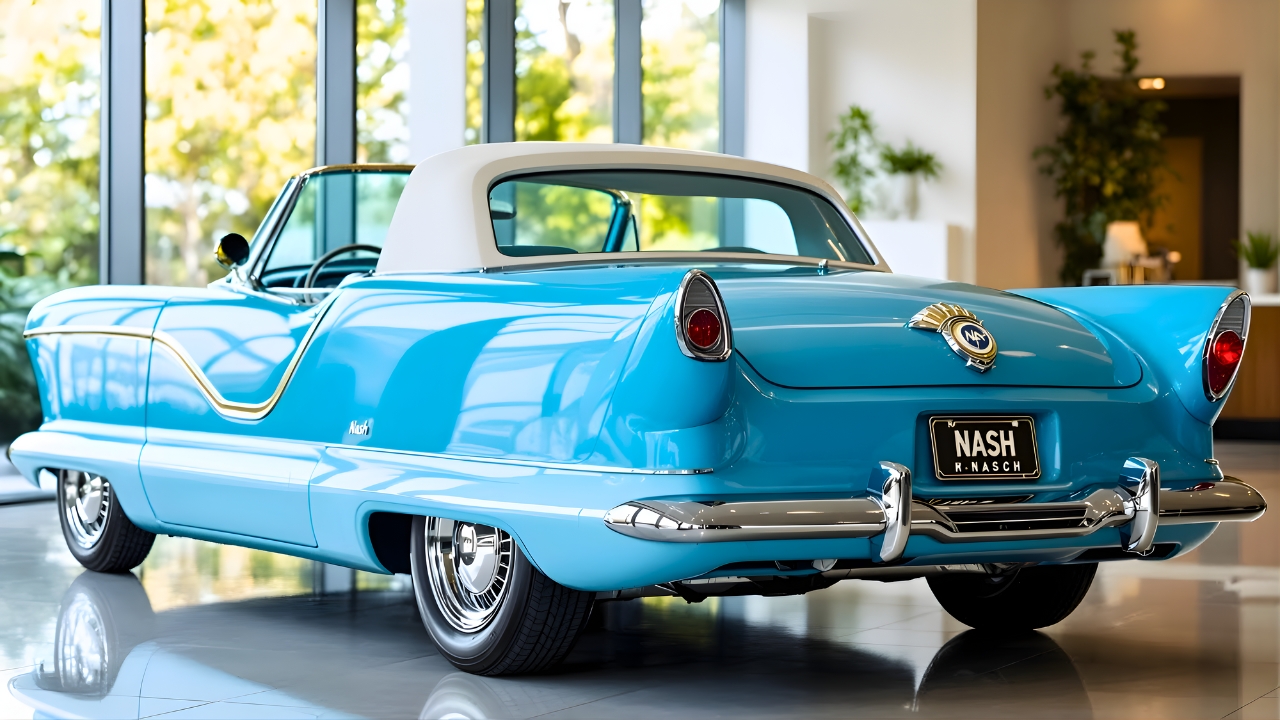In the early 1960s, the American automotive landscape was dominated by large, powerful cars. Big sedans and expansive tailfins defined the era, and the idea of a small, economical vehicle seemed almost foreign. Enter the 1962 Nash Metropolitan, a tiny car that defied conventions and quietly reshaped the perception of compact automobiles in the United States. With its unique styling, practical size, and fuel efficiency, the Metropolitan became an icon in a market eager for innovation and affordability.
Origins of the Nash Metropolitan
The Nash Metropolitan was the product of an unusual collaboration between Nash Motors in the United States and the British automaker Austin. Nash Motors envisioned a small city car tailored to the needs of urban Americans, but lacked the domestic expertise to design and manufacture such a vehicle. Austin, renowned for producing compact cars in Europe, supplied the chassis, engine, and assembly expertise. The result was a car that combined American design sensibilities with European efficiency and engineering.
Introduced in 1954 as a 1955 model, the Metropolitan underwent steady refinement through the 1960s. By 1962, the car had established itself as a reliable, stylish alternative to the large, gas-guzzling vehicles that dominated the market.
Design and Styling
The 1962 Nash Metropolitan was small but distinctive. Its two-door, two-seat body measured just under 12 feet long, making it perfect for city driving and tight parking spaces. Despite its size, the car offered a surprising amount of interior space for the driver and passenger. Its rounded lines, compact front end, and cheerful color schemes made it visually appealing and instantly recognizable.
The design focused on practicality without sacrificing style. The wide windows enhanced visibility, while the low height allowed for easy entry and exit. Inside, the dashboard was simple yet functional, with all controls easily accessible. The car came in a variety of two-tone paint options, adding a touch of personality to its compact frame.
Engine and Performance
Under the hood, the 1962 Nash Metropolitan featured a small but efficient engine. The base model used a 1.5-liter inline-four engine, producing around 52 horsepower. Though modest by American standards, the engine provided adequate power for city driving and suburban commutes. The car’s light weight and compact dimensions allowed it to accelerate quickly and handle corners with surprising agility.
Fuel efficiency was a major selling point. At a time when large sedans often struggled to achieve 10 to 15 miles per gallon, the Metropolitan could deliver over 30 miles per gallon under ideal conditions. This made it an appealing choice for drivers looking to reduce fuel costs and navigate crowded city streets without hassle.
The Metropolitan’s Market Impact
The Nash Metropolitan arrived at a time when Americans were beginning to show interest in smaller cars. Rising fuel costs, increasing urban congestion, and a desire for more economical vehicles created a niche that the Metropolitan filled perfectly. Although its sales numbers were never massive, the car became an important cultural symbol, representing a shift in consumer attitudes toward compact automobiles.
The Metropolitan appealed to a wide range of buyers. Young professionals appreciated its affordability and low operating costs, while older drivers valued its simplicity and ease of use. Its cheerful design and European engineering gave it an exotic appeal, differentiating it from the standard fare of the early 1960s.
Legacy and Influence
While the Nash Metropolitan was eventually discontinued in 1962, its influence extended far beyond its production run. The car demonstrated that there was a viable market for small, stylish, and economical vehicles in the United States. It paved the way for later compact and subcompact cars from domestic automakers, including models from Ford, Chevrolet, and Volkswagen.
Collectors today prize the Metropolitan for its unique design and historical significance. Restored examples often appear at car shows, representing an era when American automakers experimented with alternative ideas and responded to changing consumer needs.
Practicality and Daily Use
Despite its small size, the Metropolitan was surprisingly practical for daily use. Its trunk offered adequate storage for groceries or luggage, and the car’s compact dimensions made parking in crowded urban areas effortless. The low maintenance requirements and simple mechanical layout made it easy for owners to keep the car running smoothly with minimal effort.
In addition, the Metropolitan’s reliable performance in city driving conditions made it ideal for short commutes. Its lightweight construction and tight turning radius allowed drivers to navigate traffic efficiently, a feature that many larger American cars of the era could not match.
Cultural Significance
The Nash Metropolitan also held a place in American popular culture. Its cheerful design and compact form made it a recognizable icon in advertisements and lifestyle media. It represented a shift toward individuality, practicality, and efficiency, offering a fresh alternative to the massive sedans that had dominated postwar America.
The car also demonstrated the potential of international collaboration in automotive design. By combining American styling with European engineering, the Metropolitan became an early example of a global approach to car manufacturing that would later become common in the industry.
Conclusion
The 1962 Nash Metropolitan may have been small in size, but its impact on American automotive culture was significant. By offering a practical, stylish, and economical alternative to the larger cars of its time, it opened the door for a new generation of compact vehicles. Its blend of European engineering and American design foresight allowed it to stand out in a crowded market and leave a lasting legacy. Today, the Metropolitan is remembered not just as a car, but as a symbol of innovation and adaptability in an era of change.
Disclaimer
The information in this article is based on historical records, automotive publications, and credible sources related to the 1962 Nash Metropolitan. Specifications, features, and historical context are accurate to the best of current knowledge. For collectors or enthusiasts seeking precise technical details, consulting official automotive archives or verified reference materials is recommended.
